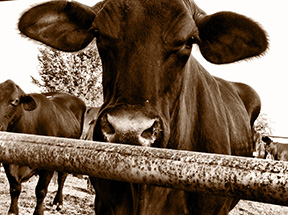

Dr. Katie Mason
Assistant Professor and Extension Beef Cattle Nutrition Specialist
Department of Animal Science
P: 865-974-8941
Sometimes we take the small things for granted, and in cattle nutrition, the “small things” are minerals. Because they make up such a small portion of cattle nutritional needs, it is easy to think they may not be that important. Mineral availability in pasture and hay forages fluctuates according to the season, fertilizer application, weather conditions, forage species, and other factors. Cattle mineral requirements also fluctuate with growth and stage of production. These elements that cannot be made by the body and are essential for proper animal function (bone development, immune function, muscle function, etc.). The easiest way to satisfy the mineral requirements of cattle is to provide a complete mineral program year-round. Here are a few considerations when it comes to minerals:
- Macrominerals are required in larger amounts, while microminerals are needed in smaller amounts.
- The calcium to phosphorus ratio (Ca:P) in a diet should be somewhere in the range of 1:1 to 4:1, with 1:1 to 1.6:1 being ideal.
- Salt (sodium and chlorine) cannot be stored in the body and must be provided daily.
- High-magnesium mineral is important during times of year when grass tetany is prevalent, like late winter and early spring.
- Grasses typically provide an adequate amount of potassium.
- Sulfur is more likely to be in excess than deficient, especially in diets high in distillers grains and corn gluten feed.
- Cobalt, iodine, iron, and manganese are rarely deficient in the diet.
- Copper is the most common deficiency in grazing cattle and can present symptoms similar to fescue toxicosis.
- Selenium is very toxic and should only be used in a premixed form, so as not to exceed the legal limit.
- Zinc absorption is tied closely to copper absorption.
When providing mineral to cattle, provide one feeder for every 30 to 50 cows. Make sure they are always full and place them close to water or loafing areas to encourage cattle to visit the feeder. Cattle should consume between 2 and 4 oz. of mineral supplement per day; do not cut premixed minerals with salt as this will alter intake and dilute the amount of mineral consumed. Trace mineral salt is not a complete mineral because it dies not contain calcium and phosphorus, and therefore will not meet the needs of your cattle.
Mineral nutrition is complex, but a critical component in cattle nutritional management programs. For more information see UT Extension PB 1749, “Mineral Nutrition of Beef Cattle.”